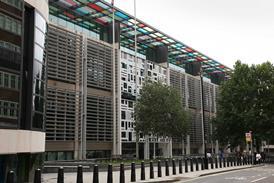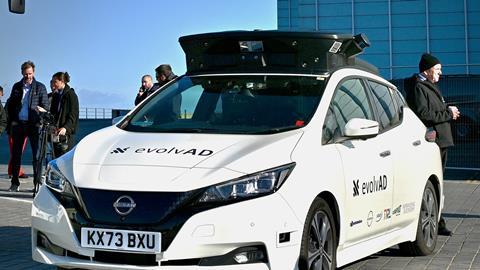Next year, London is set to become the first city in Europe to allow driverless taxis on to its streets. But lawyers warn that legislation on safety, liability and data governance still needs to be implemented
A new type of vehicle has begun to appear on London streets. The cars are marked by a conspicuous rack of electronic equipment on the roof, but by this time next year they could have an even more distinctive feature: no human being at the wheel.
In theory, London is destined to become the first city in Europe to allow fully autonomous – driverless – electric taxis to ply for hire. Two companies, UK start-up Wayve and Waymo, a Google spin-off, have announced plans to introduce the vehicles, initially with a human ‘safety driver’ on board, next year. Early testing has already begun.
The key technology is a combination of laser sensors which build a continuous three-dimensional picture of the surrounding environment – including the weather – coupled with machine-learning. Supporters of automated vehicles say they will improve safety and open up a world of mobility for people who cannot drive or use public transport. ‘Waymo is making roads safer and transportation more accessible where we operate,’ Waymo’s chief executive Tekedra Mawakana said in announcing the London launch earlier this year. The company claims to have driven more than 100 million fully autonomous miles on public roads in the US, providing more than 10 million paid rides.
‘We’ve demonstrated how to responsibly scale fully autonomous ride-hailing,’ she said. ‘We can’t wait to expand the benefits of our technology to the United Kingdom.’
However, legal specialists say the 2026 timetable is highly ambitious: ‘2027 is more realistic,’ says Jonathan Smart, partner at international firm Shoosmiths, which last week picked up a Self-Driving Industry Award for its work across the ‘connected and automated mobility’ ecosystem. Smart points out that a robust legal foundation is needed for driverless vehicles to work, but that several gaps remain to be filled.
'It’s going to take some real learning for automated vehicles to cope with London'
Jonathan Smart, Shoosmiths
Basic principles are set out in the 2024 Automated Vehicles Act (AVA), passed under the last government. The measure updates and fills gaps in the previous Automated and Electric Vehicles Act 2018. Nick Harrison, of City firm Taylor Wessing, notes that it introduces a new definition of automated vehicles that distinguishes between the concepts of ‘user in charge’, where an individual is capable of exercising control and ‘no user in charge’ – a fully automated taxi, for example. Here, the licensed operator rather than a person in the car would be responsible for problems arising. The act also creates new criminal offences, for example for providing false information related to a vehicle’s safety.
The act followed several years of work by the Law Commission, which in 2018 began a far-reaching review to ‘enable the safe and responsible introduction of automated vehicles on GB roads and public places’. It reported in 2022.
But while the AVA is widely seen as a watershed, very little is yet in force, says Smart. ‘It is the secondary legislation that’s going to put meat on the bones.’ Gaps that need filling include questions of liability, while data governance is another huge issue, Smart said. ‘It’s going to need very careful regulation.’ However, he says the regulations are expected to be waved through by parliament when time allows.
The current government, which has placed artificial intelligence at the centre of its industrial strategy, appears keen. Its implementation programme for the act states: ‘We are working to support safe trialling of prototype automated vehicles on our roads and ensure the UK is the trialling destination of choice for our industry.’ Meanwhile, earlier this year, London’s transport authority Transport for London published guidance for businesses wishing to carry out London trials. It observes that autonomous vehicles ‘are not widely understood among the public and there is a mix of speculation and misinformation as to what they are’.
Certainly, the initial deployment will be heavily scrutinised, not least by the capital’s licensed taxi drivers who have described driverless cars as ‘fairground rides’. Statistically, automated vehicles may be safer than human drivers. But, as with nuclear power, when accidents do happen, they make big headlines. Earlier this month, a Miami jury ruled that US manufacturer Tesla was partially responsible for a 2019 fatal crash involving its Autopilot system and ordered it to pay $240m in damages. (Tesla argued that the Autopilot system was being misused at the time of a collision with pedestrians and said it would appeal.)
Finally, of course, there is the issue of training automated vehicles to cope with the lively mixed ecosystem of London traffic. Smart notes that Waymo learned its driving on the grid streets of California: ‘It’s going to take some real learning to cope with London.’





































6 Readers' comments